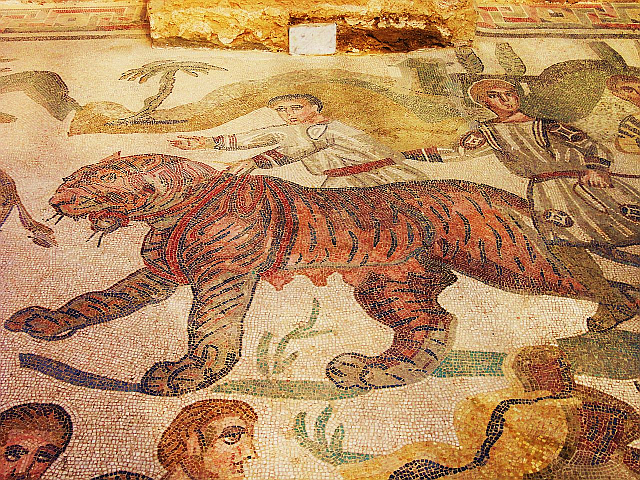Delancey Place offers "eclectic excerpts" from a large variety of books and blogs. You can subscribe and get them every day. Here's the excerpt from the Symposium for Valentine's Day:
In today's excerpt - symposia, the private banquets of the elite in ancient Athens. One such famous gathering was hosted by Agathon and attended by Socrates. The subject of the evening's discussion was the nature of Eros, the great god of desire. It is worth noting how esteemed homosexuality was at this time:
"Agathon, in a grand rhetorical flourish befitting a poet, concludes [the early portion of the discussion by saying] that though all the gods are happy, Eros is 'the most happy, since he is the most beautiful and the best.'
"To this much, all the participants save the still-silent Socrates agree. But beyond Eros's power and proximity to happiness, there is little else on which the guests can establish common ground. One speaker, Pausanias, refuses to see Eros as a single entity, claiming that he must be divided in two as Common Eros and Heavenly Eros - the one, a seedy creature drawn by sexual appetite and so depraved that he will even sleep with women; the other, a more transcendent being attracted by mind as well as beauty, who finds his consummate expression in the higher love between boys and older men. Eryximachus, on the other hand, views Eros as a pantheistic force found not only in the hearts of gods and humans but 'also in nature - in the physical life of all animals, in plants that grow in the ground, and in virtually all living organisms.'
"Finally, Aristophanes maintains in a celebrated fable that human beings were originally joined two at a time to form complete wholes. Overly powerful, these four-legged creatures provoked the suspicion of the gods, who had them sundered to reduce their strength; now each half walks the earth in search of its other. The fable explains our sexual orientation, for men originally joined to men will seek their complement in the same sex, while those originally joined to women will seek their other half accordingly. It also explains our sense of longing and loss, as we wander the earth in search of the one who will make us whole. '[W]here happiness for the human races lies,' Aristophanes concludes, is 'in the successful pursuit of love.' Eros is the great benefactor who will '[return] us to our original condition, healing us, and making us blessed and perfectly happy.'
"A pantheistic force animating the world; a schizophrenic deity both plebeian and patrician; a guide who leads us only to ourselves: Eros, clearly, is no simple god. He is, Socrates contends, no god at all. Drawing together the strands of these various reflections, Socrates maintains that Eros is, rather, a 'great spirit' who is 'midway between what is divine and what is human,' his ambiguous nature owing to the strange circumstances of his conception. Sired at the birthday party of Aphrodite, the goddess of beauty and love, Eros is the child of Poverty, who came to the festivities uninvited as a beggar, and the god Plenty, a welcome guest who passed out there drunk. How Plenty is able to perform in such a state, we are not told (presumably, a feat of the gods), but perform he does, producing a son who is neither 'mortal nor immortal.' Now fully grown, Eros takes after his mother. Constantly in need, he is 'hard, unkempt, barefoot, homeless.' But, like his father, he is 'brave, enterprising, and determined.' Having inherited 'an eye for beauty and the good,' Eros continually searches for these two qualities through love, as befits one conceived in the presence of Aphrodite.
"Straddling the human and the divine, Eros is an emissary, conducting 'all association and communication, waking or sleeping,' between the gods and men. His twofold nature explains his defining characteristic - desire itself. For what is desire but the human acknowledgment that one is in need, that one is lacking? As Socrates explains, 'the man who desires something desires what is not available to him, and what he doesn't already have in his possession.' "
Author: Darrin M. McMahon
Title:
Happiness: A History
Publisher: Atlantic Monthly Press
Date: Copyright 2006 by Darrin M. McMahon
Pages: 32-34

Happiness: A History
by Darrin M. McMahon by Atlantic Monthly Press
Hardcover

If you wish to read further:
Buy Now





